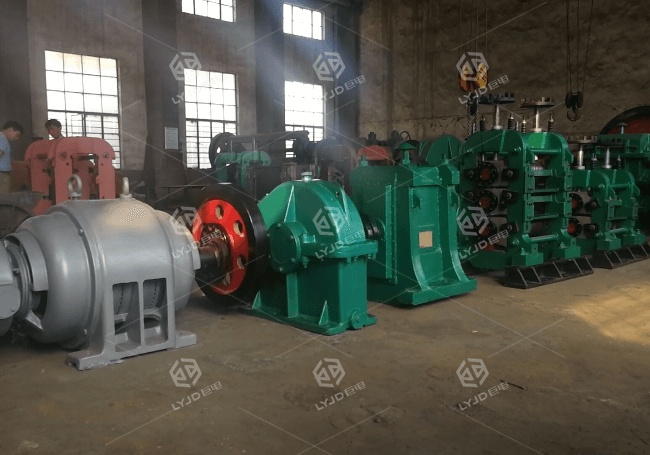Rolling steel belongs to metal pressure processing. To put it simply, rolling steel plate is like pressing noodles. After multiple squeezing and pushing with a rolling pin, the noodles become thinner and thinner.
The billets from the steel mill are only semi-finished products, and they must be rolled in the rolling mill before they can become qualified products.
In the hot rolling production line, the billet is heated and softened, sent to the rolling mill by the roller table, and finally rolled into the size required by the user.
Steel rolling is a continuous and uninterrupted operation. The steel strip runs fast on the roller table, and the equipment has a high degree of automation and high efficiency.
The steel ingots from the open hearth furnace can also be used as steel plates, but they must first be heated and bloomed before being sent to the hot rolling line for rolling. It is much simpler to switch to continuous casting.
Generally, the thickness of the continuous casting billet is 150-250mm. It first goes through dephosphorization to rough rolling, and then enters the finishing rolling mill through the roller table. face head.
The speed of the finishing mill can reach 23m/s. The hot-rolled products are divided into two types: steel coils and ingot-type plates. The thickness of the hot-rolled steel rails is generally a few millimeters. If the user requires a thinner steel plate, it needs to be cold-rolled.
Compared with hot rolling, the processing lines of cold rolling plants are relatively scattered. Cold rolling products mainly include ordinary cold-rolled sheets, coated sheets, that is, tin-plated sheets, galvanized sheets and color-coated sheets.
The steel coils sent from the hot rolling mill must first undergo three consecutive technical treatments. First, the oxide film is removed with hydrochloric acid, and then it can be sent to the cold rolling mill.
On the cold rolling mill, the coil is opened by the decoiler, and then the strip is introduced into the five-stand continuous rolling mill to be rolled into thin coils. There are also ordinary steel coils of different specifications from the five racks, which are processed according to the various requirements of users.
According to the different rolling temperature, it can be divided into hot rolling and cold rolling; according to the relative motion relationship between the rolling piece and the roll during rolling, it can be divided into longitudinal rolling and horizontal rolling; according to the forming characteristics of rolled products, it can be divided into general rolling and Special rolling. Spinning rolling and bending forming belong to special rolling.
Rolling, like other processing, is to plastically deform the metal and make it into a unique product.
The difference is that the rolling work is carried out between rotating rolls. There are two types of rolling mills, the main equipment of the rolling mill or the main train of the rolling mill, the auxiliary equipment and the auxiliary equipment.
The equipment used to deform the metal in the rotating rolls is usually referred to as the main equipment. The operation line arranged by the main equipment is called the main machine row of the rolling mill. The host train consists of three parts: the main motor, the rolling mill and the transmission machinery.
This is what we share today, welcome to pay attention to Luoyang Judian, you can learn more about steel rolling production.

Please send us your request and we reply to you with in 24 hours.
Submit Request